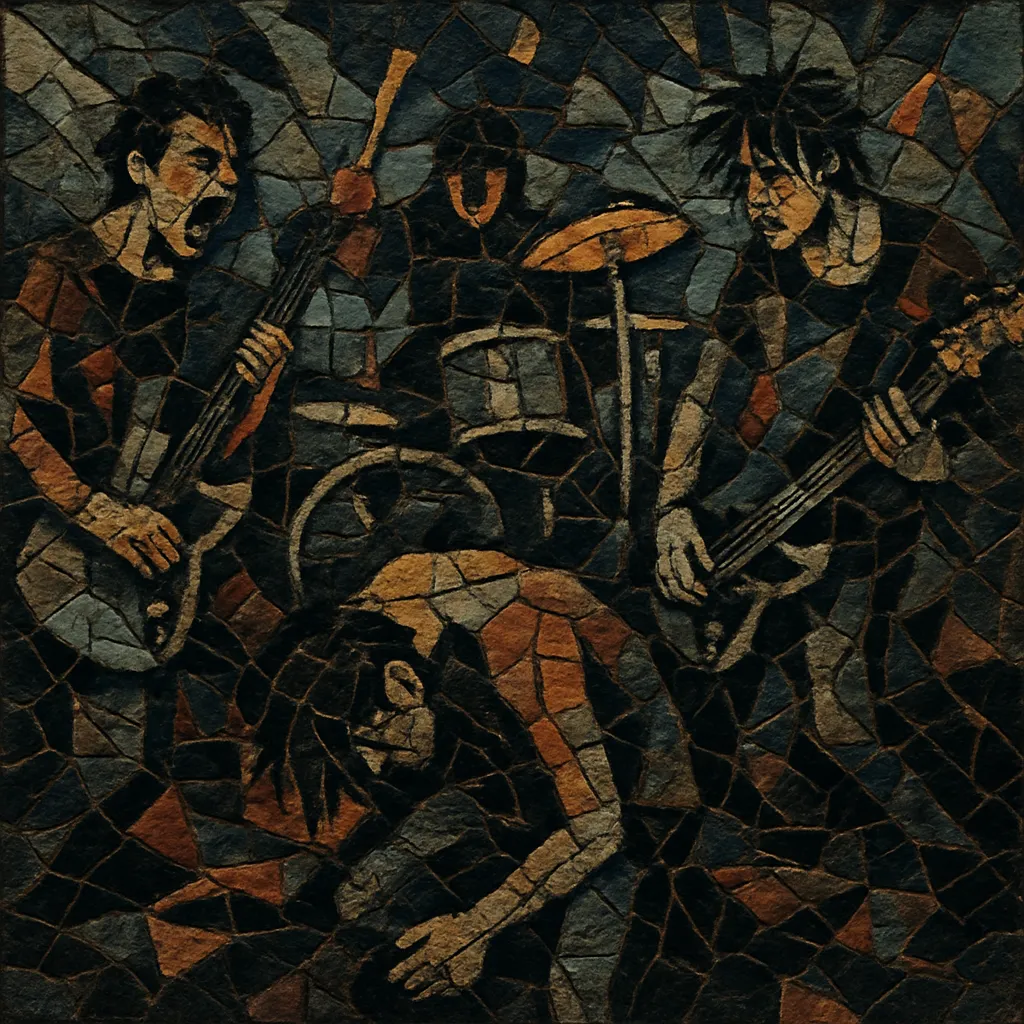Noise rock is a subgenre of rock that deliberately embraces distortion, feedback, dissonance, and abrasive textures as primary musical materials rather than mere effects.
It prioritizes timbre, volume, and sonic density over conventional melody and harmony, often using nonstandard tunings, prepared or detuned guitars, and extended techniques to generate harsh overtones and sheets of sound.
Rhythm sections tend to be driving and repetitive, anchoring the chaos with motorik pulses, lurching grooves, or pummeling, minimal patterns. Vocals range from spoken and murmured to shouted and cathartic, with lyrics that skew cryptic, confrontational, or surreal.
Aesthetically, noise rock traces a line from punk’s anti-virtuosity and DIY ethos through no wave’s iconoclasm and the avant-garde’s interest in sound-as-sound, yielding music that can be physically intense, psychologically unsettling, and artistically exploratory.
Noise rock coalesced in the wake of punk’s first wave, when artists began pushing beyond simple chords into deliberate abrasion and timbral experimentation. The New York no wave scene (e.g., Teenage Jesus & The Jerks, DNA, Mars) rejected rock convention and foregrounded texture, atonality, and confrontation. Proto precedents included The Velvet Underground’s drone/feedback experiments and The Stooges’ raw minimalism, while the avant-garde (free jazz, minimalism, musique concrète) normalized noise as an expressive material.
By the mid-1980s, bands such as Sonic Youth (with alternate tunings and prepared guitars), Swans (crushing repetition and volume), Big Black (drum machines, sheet-metal guitars), and Butthole Surfers (psychedelic grotesquerie) codified noise rock’s core traits: severe distortion, feedback sculptures, repetitive or lurching grooves, and confrontational performance. Independent labels and a DIY live circuit enabled a nationwide U.S. network, with pockets also growing in the UK, Australia, and Japan.
Noise rock’s vocabulary bled into adjacent styles: grunge absorbed its abrasion; post-hardcore and math-leaning bands took its angularity; sludge and alternative metal drew on its density. Acts like The Jesus Lizard and Unsane refined a taut, rhythm-section-forward brutality, while Shellac emphasized precision, space, and recording realism. Simultaneously, Japanese groups (e.g., Boredoms) fused noise rock with psychedelic and experimental impulses, expanding the palette.
Though often underground, noise rock remains influential. New generations combine its textures with shoegaze, industrial, post-rock, and experimental electronics. The aesthetic—sound-as-impact, texture-as-structure—persists in contemporary heavy, experimental, and indie spheres, with live performance still central: high volume, physicality, and controlled feedback as defining gestures.


